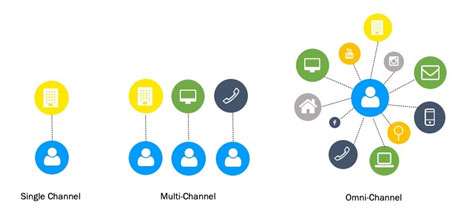6 Ways to Adapt Your Post-COVID Ecommerce Strategy
The COVID pandemic sent global shockwaves in the ecommerce world. But what insights can you carry into your ecommerce strategy going forward?
COVID-19 has had a monumental impact on the financial and mental wellbeing of the population across the globe. With that in mind, adapting your post-COVID ecommerce strategy should be a top priority for retailers. In order to help businesses bounce back and achieve commercial success in these difficult times, Pattern’s team has developed a 6-step approach to adapting your post-COVID ecommerce strategy for the new normal.
1. Start with the customer
Research has shown in past recessions, the companies that come out on top are those that invest in customer experience. Your business starts and ends with your customer, and so should your approach to your post-COVID ecommerce strategy. The way consumers research and make purchases has changed. Mindfulness about safety and social distancing will be lasting and may mean fewer and shorter trips to physical stores.
For retailers operating across multiple channels, an omni-channel ecommerce strategy is fast becoming a necessity. Multi-channel strategies are focused on channel-specific sales processes, while omni-channel strategies place the customer at the center, offering personalized products and services anywhere.

2. Gain insights into behavioral change
Behavior changes will vary by state and postcode. Segmenting data by location and overlaying insights around the impact of COVID-19, specific to that area, will help to identify changes in behavior that are more likely to stick in the longer term. We recommend retailers examine the periods pre-COVID, during, and post restriction, plus lockdown periods; to look for changes in how, what, and where customers were purchasing.
This data can provide insights into what options were convenient or felt safe for your consumers. You can then start to hypothesize why, and how you can bring that same safety and convenience to your consumers going forward.
3. Learn from your loyal customers
COVID-19 saw many consumers choose availability and convenience over brand loyalty. As part of your post-COVID ecommerce strategy, we would recommend you look into not only whether your loyal customers’ behavior and spending patterns have changed, but also whether their satisfaction level has been impacted by out-of-stocks or extended delivery delays.
You can also look for common threads in the loyal customers. Is there a common denominator that helped those customers stick? Can that common denominator be amplified? Closely examining your data will help you identify opportunities to address any areas of concern and deepen the relationship with your most valuable customers. Retailers should continue to capture and monitor your Net Promoter Score (NPS) or Customer Satisfaction (CSAT) ratings and gain valuable feedback on where the biggest pain points may be.
4. Look to competitors and other businesses
The shift to at-home-everything saw more agile retailers pivot and innovate to meet changing customer needs. For example, during stage 4 lockdown in Melbourne, Mecca Cosmetica quickly enabled services like call and collect and enhanced their online service offering by utilizing their store teams to help customers via live chat and virtual consultations. Looking at examples of great customer experiences both within and outside of your industry will help you understand if your value proposition is still competitive in the space. It will also help you identify initiatives you can apply to your business as part of your post-COVID ecommerce strategy.
5. Map the customer journey across channels
Identify any pain points and opportunities—pay attention to the experience between channels. Whilst delivering a great experience in a physical store or via the website is important; many retailers often overlook the omnichannel customer journey across channels and marketplaces. Post-COVID, your consumers have been exposed to more online channels than ever before. Retailers must reflect on any learnings/friction points with channels that need to be addressed to ensure they are delivering the best customer experience.
6. End with the customer–prioritize, test, learn, and repeat
Finally, reviewing your roadmap for growth and future plans will be a fundamental part of your post-COVID ecommerce strategy. Consider the learnings that have unfolded since the onset of the pandemic and prioritize based on customer value and effort, fast-tracking any quick wins that are important to your customer and low effort to deliver. Test, learn, and repeat. In the fast-changing ecommerce environment, an agile mindset is more important than ever. Pattern regularly reviews the omni-channel customer experience provided by retailers and brands. We deliver a prioritized action plan with clarity around quick wins, required resources, and level of effort required. For more information on how we could support your business, get in touch.


.jpg)





.jpg)

